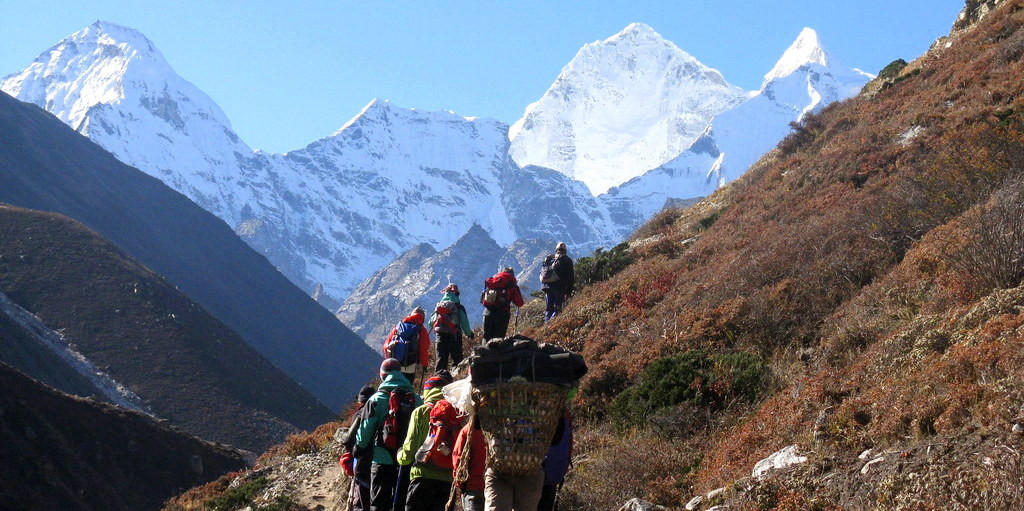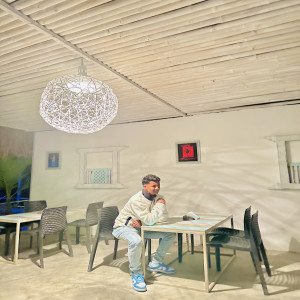Why Spring Treks in Nepal?
Spring in Nepal is an enchanting time for trekking, distinguished by mild and stable weather that enhances the experience of navigating the Himalayan trails. As the winter snow recedes, the landscape transforms, with rhododendrons and other wildflowers blooming in vibrant colors, adorning the paths with spectacular natural beauty. This season offers crystal clear views of the towering mountain peaks, thanks to the clear skies before the monsoon clouds gather. Additionally, the spring months coincide with lively cultural festivities in Nepal, such as Holi, the festival of colors, and the Nepali New Year, which enrich the trekking journey with unique cultural interactions and celebrations. Wildlife is more active during this time, making it ideal for enthusiasts interested in the region's diverse fauna. The spring season also aligns with the peak climbing period, particularly for Everest expeditions, adding a buzz of excitement around the base camps. This combination of favorable climatic conditions, scenic beauty, and vibrant culture makes spring an exceptional time for trekking in Nepal, offering an immersive experience that connects trekkers with both nature and local traditions.
Optimal Weather Conditions
Spring in Nepal, typically from March to May, is renowned for its optimal weather conditions which are ideal for trekking. After the harsh winter, the weather during spring becomes significantly milder, making it an excellent time for outdoor activities. Here’s why the weather in spring is so favorable for treks in the Himalayas:
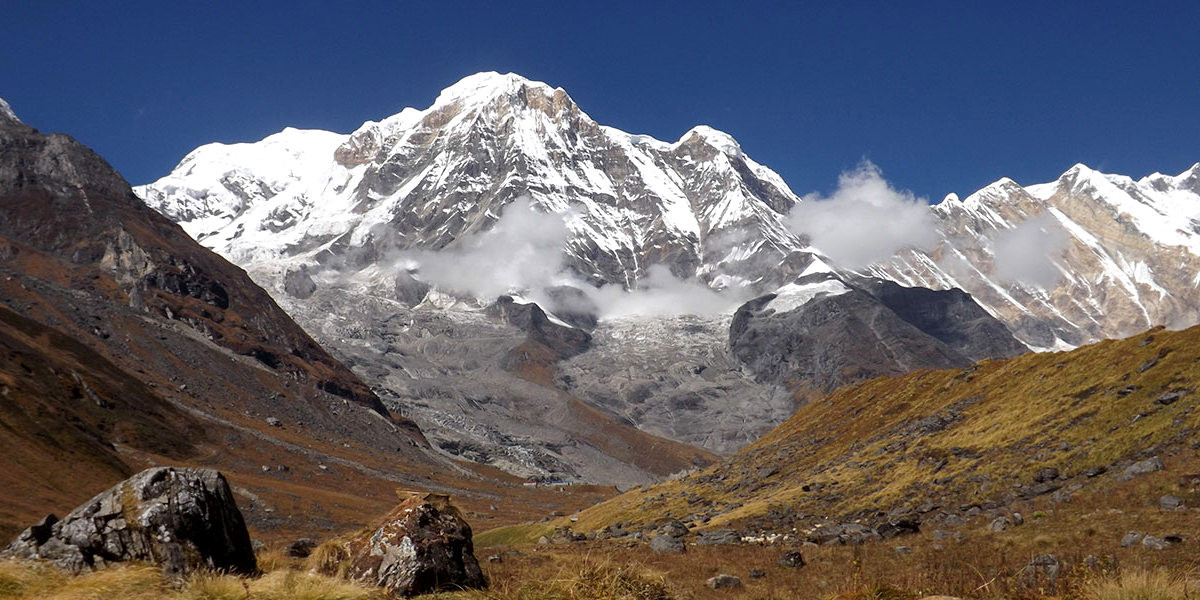
-
Stable and Clear Skies: Spring is characterized by stable weather patterns with less fluctuation in temperatures. This stability greatly reduces the risks associated with high-altitude trekking, such as sudden storms or extreme cold. The skies are often clear, providing uninterrupted views of the mountains, which is a key draw for trekkers who come to admire the spectacular Himalayan ranges.
-
Pleasant Temperatures: During spring, the temperatures are comfortably warm during the day, which is perfect for trekking. It isn’t too hot, which means trekkers can enjoy long days on the trails without the intense sun that characterizes the summer months. At night, the temperatures drop, making it cool enough for a good night’s rest without the severe cold encountered in winter months.
-
Reduced Precipitation: Spring is the pre-monsoon season in Nepal, so precipitation is much lower compared to the monsoon months of June through September. This means trekkers are less likely to encounter heavy rains that can cause delays or trail disruptions. The lower likelihood of rain also means fewer muddy paths and slippery trails, contributing to safer and more comfortable trekking conditions.
-
Visibility and Daylight: With the retreat of winter’s fog and haze, spring offers great visibility which is crucial for both safety and enjoyment while trekking. Longer daylight hours are another advantage, allowing more time for trekking each day and providing ample opportunity for rest stops and photography without rushing to reach the next campsite before dark.
These optimal weather conditions during the spring season not only enhance the trekking experience by providing safety and comfort but also ensure that trekkers can fully appreciate the beauty and grandeur of Nepal’s natural landscapes. This makes spring an ideal time for both novice trekkers and experienced mountaineers to explore the Himalayas.
Floral Spectacle
Spring in Nepal is a period renowned not just for its favorable trekking conditions but also for its spectacular floral displays, transforming the landscape into a vivid painter's palette. As the snow recedes and the warmth of spring sets in, the hills and mountainsides of Nepal burst into vibrant life, especially with the blooming of rhododendrons, the national flower of Nepal. Here’s why the floral spectacle is such a draw:
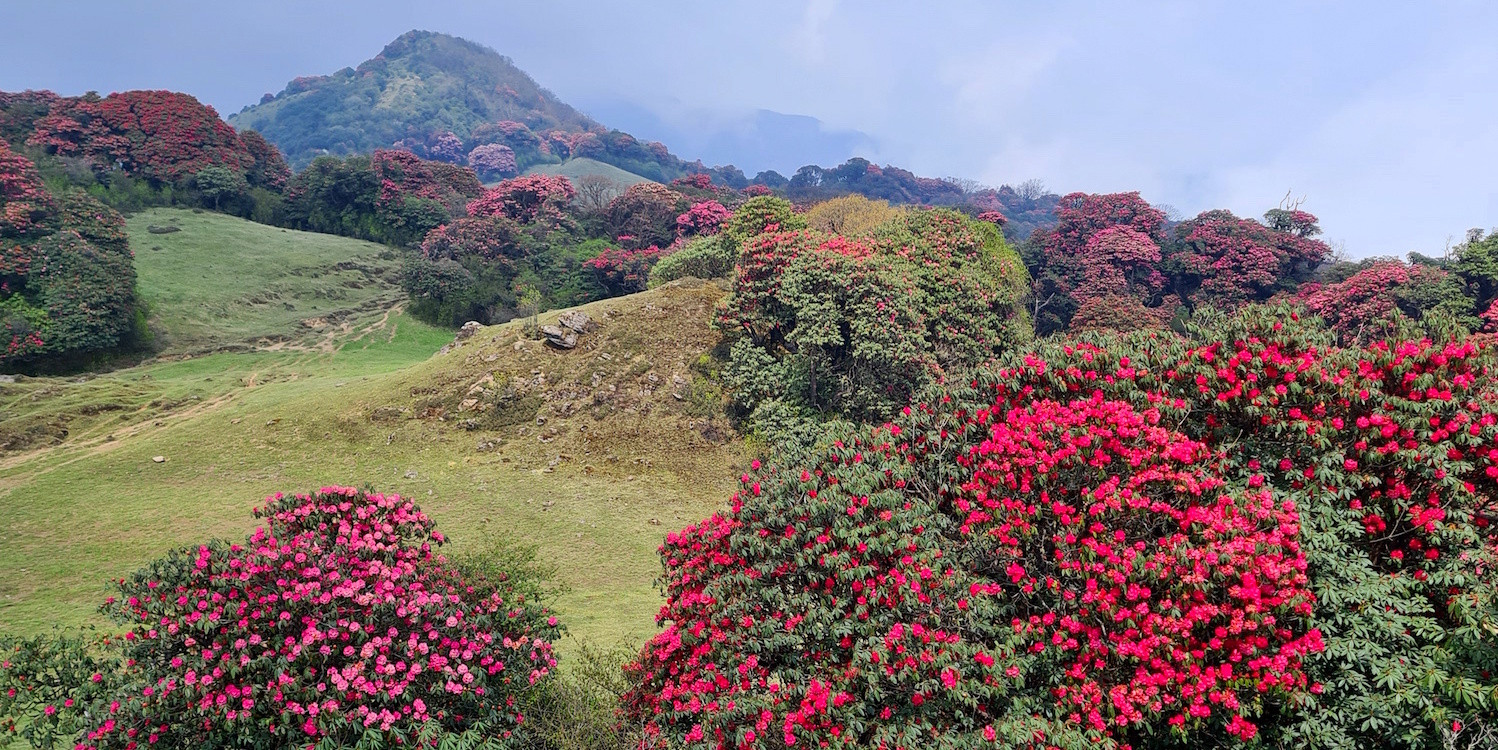
-
Rhododendron Blooms: Nepal boasts more than 30 species of rhododendrons that range in color from white and pink to deep red. These flowers typically start blooming in late February and reach their peak in April, covering the forests in brilliant hues. The Ghorepani Poon Hill trek, known as the Rhododendron Trek, offers some of the most stunning displays, as entire hillsides turn fiery red, pink, or white.
-
Diverse Flora: Beyond rhododendrons, spring in Nepal sees a multitude of other wildflowers bloom, including magnolias, wild orchids, and the elusive edelweiss. These flowers add to the color palette of the trekking routes, enhancing the visual appeal and making the journey through various altitudes a continually changing floral experience.
-
Enhanced Trekking Experience: The blooms are not just beautiful to look at; they also add a layer of enjoyment to the trekking experience. Walking through fragrant forests and alongside meadows dotted with a spectrum of colors can be incredibly uplifting for the spirit and provides wonderful opportunities for nature photography.
-
Attraction for Wildlife: The abundance of flowers not only beautifies the landscape but also attracts a variety of wildlife. Spring is an excellent time for bird watching and spotting other wildlife, as animals emerge to feed on the plentiful blossoms and the lush vegetation that follows the bloom.
-
Cultural Significance: For many local communities, the blooming season holds cultural significance and is a time of renewal and celebration. Some festivals and rituals in spring are directly tied to the blossoming of flowers, symbolizing new beginnings and the beauty of nature.
This floral spectacle makes spring one of the most visually rewarding times to trek in Nepal. The riot of colors not only enhances the scenic beauty of the trails but also enriches the trekking experience, making it a preferred choice for those looking to combine their hiking adventure with the natural aesthetics of the Himalayan biodiversity.
Peak Climbing Season
Spring in Nepal is not only prime for trekking but also marks the peak climbing season in the Himalayas, especially for the world's highest summits such as Mount Everest and Lhotse. This season, running from late March to the end of May, is especially significant for climbers due to several key factors:
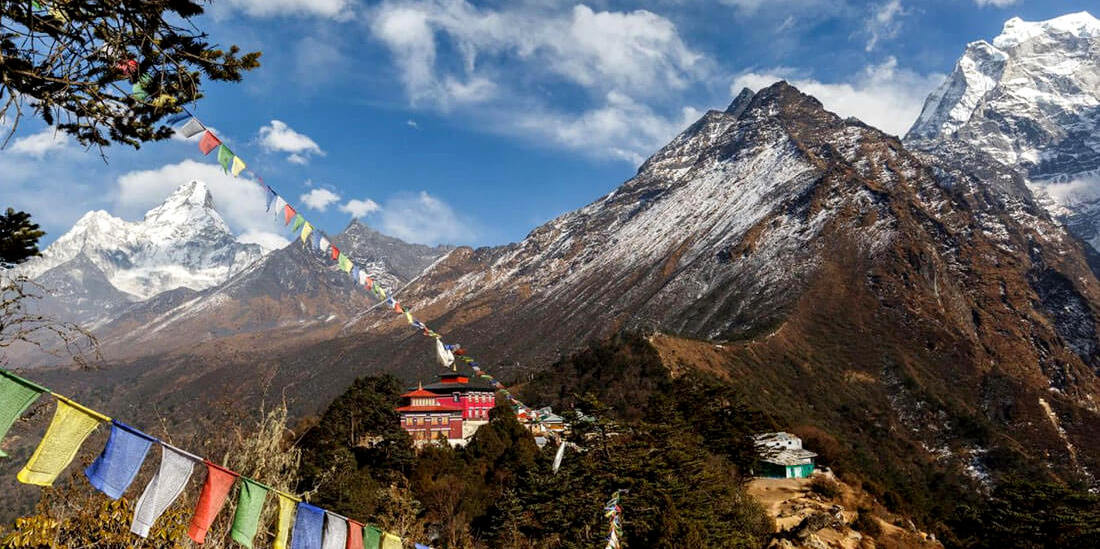
-
Stable Weather Windows: Spring offers the most stable weather conditions, which are crucial for high-altitude climbing. The jet streams, which bring extremely high winds, typically shift north of the Himalayas by May, reducing the wind speeds at the summits and creating safer and more manageable conditions for climbers.
-
Optimal Temperature: Although still cold, the temperatures during spring are relatively warmer compared to the autumn and winter months. This slight increase in temperature makes the extreme environment somewhat more bearable and reduces the risk of frostbite, a common danger in high-altitude climbing.
-
Longer Daylight Hours: Spring provides longer daylight hours, which are critical for safe climbing. More daylight means climbers have extended periods to make progress on their ascents and descents, which can be pivotal when timing summit pushes or navigating through challenging sections.
-
Pre-monsoon Conditions: Climbing in the pre-monsoon season means that the climbers face fewer snowfalls and wet conditions, which can make the ascent more treacherous. Less snow accumulation reduces the risk of avalanches, one of the major hazards in mountain climbing.
-
Social and Collaborative Atmosphere: The spring climbing season in Nepal is also a bustling time, with many international climbers and mountaineering teams congregating in the region. Base camps like those on Everest become small international communities. This atmosphere provides opportunities for camaraderie, sharing of resources, and the exchange of crucial climbing information and tips.
-
Well-established Infrastructure and Support: By spring, the trekking and climbing infrastructure is fully operational with seasoned guides, well-stocked base camps, and established rescue operations. This infrastructure supports the climbers' needs, from logistical arrangements to emergency services, ensuring a safer climbing experience.
These factors make spring the most favored and strategic season for attempting high-altitude climbs in Nepal. The combination of better weather conditions, longer days, and a vibrant climbing community creates the perfect environment for both seasoned alpinists and enthusiastic novices aiming to tackle some of the highest peaks on the planet.
Cultural Festivities
Spring in Nepal is not only a season of natural beauty and optimal trekking conditions but also a time rich with cultural festivities that add depth and color to the experience of visitors. The spring months align with several important festivals in the Nepalese calendar, each offering trekkers a unique opportunity to witness and participate in local traditions and celebrations:
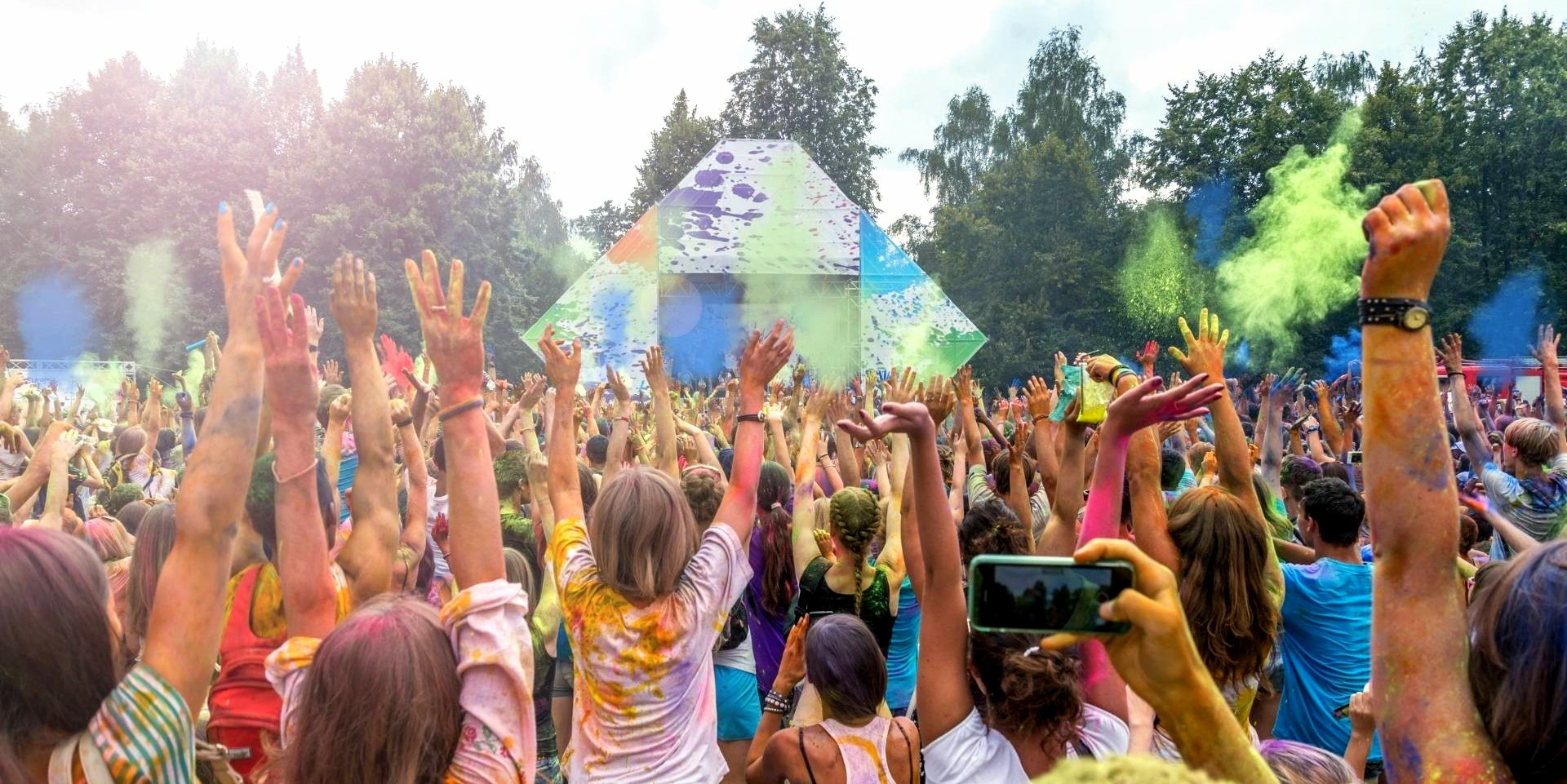
-
Holi - The Festival of Colors: Typically occurring in March, Holi is one of the most vibrant and widely celebrated festivals across Nepal. It marks the victory of good over evil and the arrival of spring. Trekkers can join in the festivities where locals and visitors alike throw colored powders and water at each other, creating a fun and festive environment. This festival is a perfect opportunity for cultural immersion and photography.
-
Bisket Jatra: Celebrated in the ancient city of Bhaktapur and other parts of the Kathmandu Valley, Bisket Jatra is a spectacular event that marks the Nepali New Year in April. The festival is famous for its massive chariot processions, high-energy tug-of-war competitions, and cultural dances, reflecting the rich cultural heritage of the Newar community.
-
Buddha Jayanti: Commemorating the birth, enlightenment, and death of Lord Buddha, Buddha Jayanti falls on the full moon day in May. Since Nepal is the birthplace of Buddha, this festival is celebrated with great reverence, particularly in Buddhist regions and around Buddhist stupas like Swayambhunath and Boudhanath in Kathmandu. Activities include prayer meetings, meditation sessions, and the ceremonial lighting of butter lamps.
-
Mother's Day: In Nepal, Mother's Day or "Mata Tirtha Aunsi" occurs in early May. It's a day when people pay homage to their mothers with gifts and delicacies. Those whose mothers have passed away visit Mata Tirtha ponds, which are sacred sites near Kathmandu, to perform rituals and remember their mothers.
-
Rhododendron Festival: Celebrated in various regions where rhododendrons bloom, this festival not only highlights floral beauty but also includes cultural performances, local handicraft displays, and traditional music, celebrating the natural heritage of the region.
These festivals provide a fantastic complement to the natural attractions of spring treks in Nepal. Participating in or observing these cultural festivities allows trekkers to gain a deeper understanding and appreciation of Nepalese society, enhancing their overall trekking experience with memorable and engaging cultural insights.
Wildlife Activity
Spring in Nepal not only brings warmer temperatures and blooming landscapes but also an increase in wildlife activity, making it a prime time for nature enthusiasts to explore the region's rich biodiversity. As the snow melts and the higher regions become more accessible, animals emerge from their winter hiding spots, and the abundant food sources lead to increased sightings. Here’s how spring enhances wildlife activity in Nepal:
-
Emerging from Hibernation: Many animals that hibernate during the harsh winter months start to wake up with the arrival of spring. Species like the Himalayan black bear, and various rodents and reptiles become more active, venturing out into the open in search of food.
-
Migratory Birds: Spring is also a critical period for bird migration. Nepal, being on major migratory routes, witnesses the arrival of a variety of birds that add to the local avifauna. Bird watchers can spot species such as the beautiful Himalayan monal, various types of falcons, and eagles. The Koshi Tappu Wildlife Reserve, in particular, is a hotspot for birding enthusiasts during this season.
-
Breeding Season: For many species, spring marks the beginning of the breeding season. This activity leads to increased sightings of animals as they engage in mating displays and territorial dances. The forests and grasslands become lively with the sounds and sights of wildlife, providing thrilling encounters for trekkers and wildlife photographers.
-
Abundance of Flora: The explosion of plant life during spring provides ample food for herbivores, leading to a domino effect that increases the activity of the entire food chain. Areas like Chitwan and Bardia National Parks are particularly active with sightings of deer, rhinoceros, and even the elusive Royal Bengal tiger, which might come out more frequently to hunt.
-
Butterflies and Insects: Spring also sees a surge in the population of butterflies and other insects, which are crucial to the ecosystem as pollinators. Trekking through Nepal’s trails, one can observe a variety of these colorful insects, adding another layer of charm to the hiking experience.
Engaging in wildlife watching during spring treks in Nepal not only enhances the trekking experience but also offers insights into the ecological complexity of the Himalayan region. Trekkers are advised to bring binoculars and cameras to capture these moments and to maintain a respectful distance to ensure the safety and well-being of the wildlife.
Favorable Trekking Conditions
Spring in Nepal offers favorable trekking conditions that make it one of the best times for hikers and adventurers to explore the diverse terrains and stunning landscapes of the Himalayas. Here’s why spring is so advantageous for trekking:
-
Weather Stability: Spring, particularly from March to May, experiences relatively stable weather with fewer fluctuations in temperature and climatic conditions. This stability is crucial for planning and executing longer treks, where sudden weather changes can pose significant challenges.
-
Dry Trails: As the winter snow melts and before the monsoon rains begin in June, the trails are usually dry and firm, making them safer and more comfortable for trekking. Dry conditions mean less mud and slush, which reduces the risk of slips and falls, especially on more challenging routes.
-
Temperature and Comfort: The temperatures during spring are moderate—neither too cold as in winter nor too hot as it can be in the summer months. These temperatures are ideal for trekking, as they provide a comfortable environment for physical exertion and make acclimatization to higher altitudes easier.
-
Clear Skies and Great Visibility: Spring is known for its clear skies, which offer spectacular views of the snow-capped Himalayan peaks. Good visibility not only enhances the trekking experience with breathtaking panoramic views but also aids in navigation and safety on the trails.
-
Longer Days: Spring days are longer, providing more daylight hours for trekking. This allows for a more relaxed pace, with ample time for breaks to rest, take photos, and enjoy the scenery without the pressure to reach the next campsite before dusk.
-
Access to High Passes: Many of the high passes in the Himalayas, which are closed during the winter due to heavy snowfall, become accessible again in spring. This opens up routes that are not available during other seasons, such as the Thorong La pass on the Annapurna Circuit or the Cho La pass in the Everest region.
-
Biodiversity: Spring is when the region's flora and fauna are in full bloom, with rhododendrons and other wildflowers covering the hillsides in vibrant colors. Wildlife is also more active during this season, enhancing the ecological experience of the trek.
These favorable conditions contribute significantly to why spring is considered the prime trekking season in Nepal. Whether you are a seasoned trekker aiming for a challenging route or a beginner looking to enjoy scenic walks and cultural interactions, spring offers the optimal conditions for an unforgettable Himalayan adventure.
Diverse Trekking Options
Spring in Nepal not only boasts perfect trekking conditions but also offers a wide array of trekking options that cater to diverse interests and skill levels. From well-trodden paths to lesser-known routes, here's a closer look at the diverse trekking possibilities available during the spring season in the Himalayas:
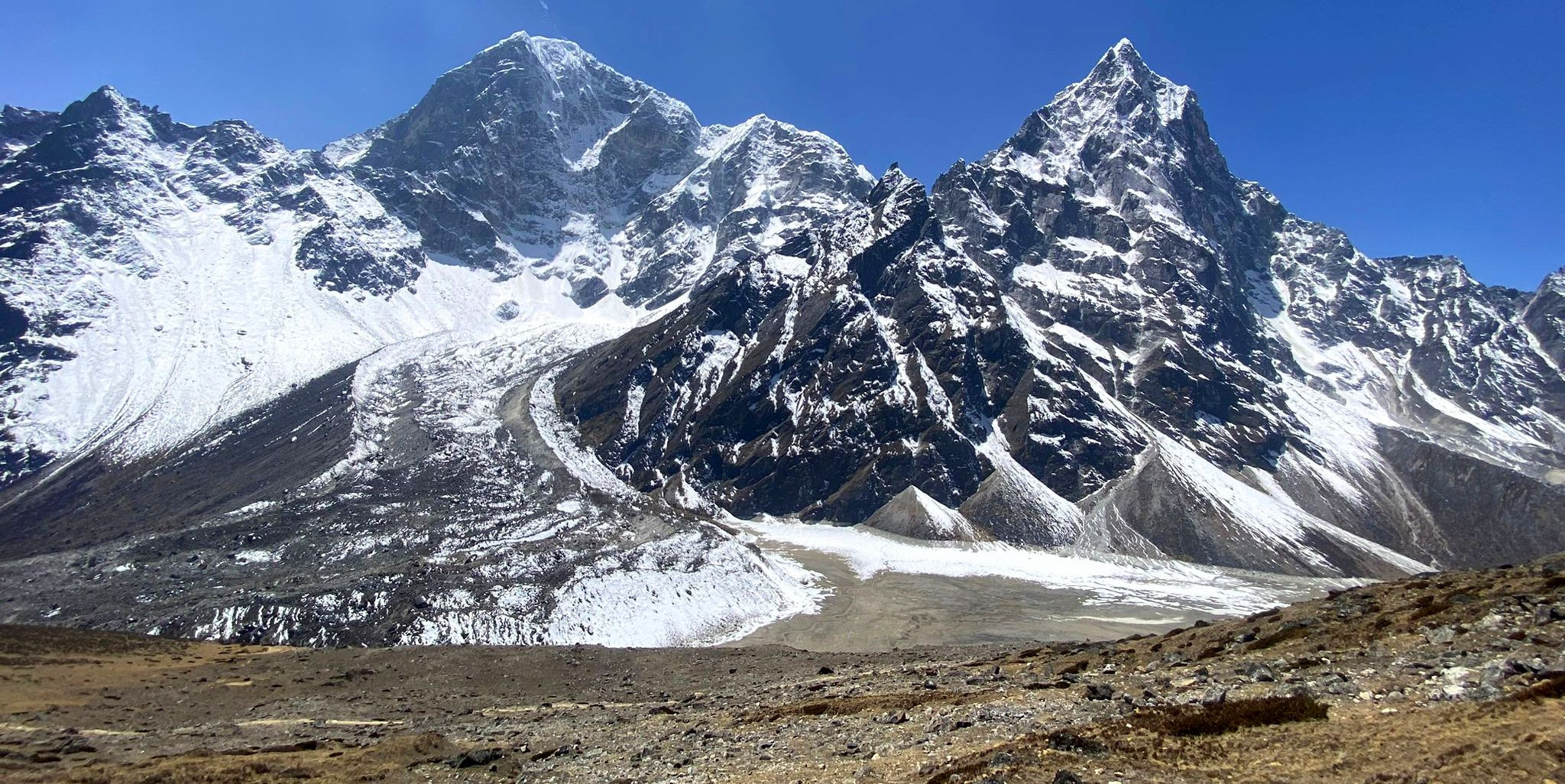
-
Everest Base Camp Trek: A quintessential trek for serious adventurers, this trek offers a challenging route with stunning views of the world's highest peak, Mount Everest. Spring brings clearer skies and more stable weather, making it ideal for those looking to experience the vibrant atmosphere at base camp during the peak mountaineering season.
-
Annapurna Circuit Trek: This trek is famed for its diverse landscapes and cultural experiences. Spring enhances the journey with blooming rhododendrons and clearer views of the Annapurna range. The circuit takes trekkers through subtropical forests, high mountain passes, and traditional villages, providing a well-rounded trekking experience.
-
Langtang Valley Trek: Less crowded than the Everest and Annapurna treks, Langtang offers a quieter but equally rewarding experience. The valley is home to lush forests, high alpine meadows, and Tamang villages, with the added attraction of visiting Langtang National Park for wildlife spotting.
-
Manaslu Circuit Trek: Known for its remote and wild setting, the Manaslu Circuit has become increasingly popular for those seeking solitude and untouched natural beauty. The trek circles Mount Manaslu, the eighth-highest peak in the world, and features a mix of challenging terrain and authentic cultural interactions.
-
Ghorepani Poon Hill Trek: Ideal for those with limited time or seeking a less strenuous option, this trek offers some of the best views of the Annapurna range. In spring, the path is lined with the famous rhododendron forests in full bloom, making it particularly scenic.
-
Upper Mustang Trek: Offering a stark desert-like landscape with deep ravines and rock shelves, set against a backdrop of snow-capped peaks, Upper Mustang is a unique trek that exposes trekkers to the ancient Tibetan Buddhist culture. Spring is a great time to visit, as the weather is mild and the winds are less severe.
-
Kanchenjunga Base Camp Trek: For the truly adventurous, this trek leads to the base camps of the third-highest mountain in the world, Kanchenjunga. This challenging route takes trekkers through remote mountainous terrain and offers a chance to experience the pristine wilderness.
Each of these treks showcases the natural and cultural diversity of Nepal, offering everything from high-altitude challenges and stunning panoramic views to rich cultural experiences and vibrant wildlife. Spring enhances these treks by providing better weather, clearer paths, and the beauty of nature in full bloom, making it an ideal time to explore the varied landscapes of the Himalayas. Whether you are looking for adventure, relaxation, or cultural immersion, Nepal's diverse trekking options in spring have something to offer every type of trekker.
Spring in Nepal offers a harmonious blend of natural beauty, favorable trekking conditions, and cultural richness, making it the ideal season for an unforgettable trekking experience in the Himalayas. The mild weather, clear skies, and the scenic beauty of the landscapes in full bloom create perfect conditions for both novice and experienced trekkers. The blooming rhododendrons and active wildlife enhance the visual and sensory experience, while the cultural festivals provide a unique glimpse into the traditions and celebrations of the Nepalese people. All these factors converge in spring, offering trekkers a profound connection to nature and a deeper understanding of Nepal's cultural heritage. Whether seeking adventure, relaxation, or cultural immersion, spring treks in Nepal provide an enriching journey that resonates long after the trails have ended.
FAQs for Why Spring Treks in Nepal?
Q: What makes spring the best time for trekking in Nepal?
A: Spring in Nepal, from March to May, offers stable and mild weather, clear skies, and moderate temperatures, ideal for trekking. The natural landscape is vibrant with blooming rhododendrons and other wildflowers, enhancing the beauty of the trekking routes.
Q: Are there any cultural events I can experience during spring treks in Nepal?
A: Yes, spring coincides with several vibrant festivals such as Holi, the festival of colors, and the Nepali New Year. Participating in these festivals provides a unique insight into Nepalese culture and traditions.
Q: Is it safe to trek in the Himalayas during spring?
A: Spring is considered one of the safest times to trek in the Himalayas due to the stable weather conditions, clear paths, and less slippery trails. However, proper preparation and following safety guidelines are essential.
Q: What kind of wildlife might I see during a spring trek in Nepal?
A: Spring is an excellent time for wildlife enthusiasts as the animals are more active. You might see species such as the Himalayan Tahr, red pandas, and various birds, including the national bird of Nepal, the Danphe.
Q: How crowded are the trails during spring in Nepal?
A: Spring is a popular trekking season, so popular routes like Everest Base Camp and Annapurna Circuit can be quite busy. However, many less-traveled paths offer equally stunning scenery and more solitude.
Q: What should I pack for a spring trek in Nepal?
A: Essential items include layered clothing, a good quality waterproof and windproof jacket, trekking boots, a sleeping bag suitable for colder nights, sunscreen, and a first aid kit. Don't forget your camera for the stunning landscapes and vibrant festivals!
Q: Can beginners participate in spring treks in Nepal?
A: Absolutely! There are a variety of treks available, ranging from easy to challenging. Trails like Poon Hill are ideal for beginners, offering manageable treks with rewarding views and cultural experiences.
Q: What are the best spring treks in Nepal for experienced trekkers?
A: Experienced trekkers might enjoy the challenge and solitude of the Manaslu Circuit Trek or the technical climbs in the Everest region. These treks offer not only physical challenges but also stunning natural beauty and cultural richness.
Q: How do I prepare for altitude sickness during high-altitude spring treks?
A: It's crucial to acclimatize properly by ascending slowly, staying hydrated, and possibly using medication as recommended by a healthcare provider. Planning rest days and listening to your body's needs can prevent altitude sickness.
Q: Are there any specific health concerns I should be aware of when trekking in Nepal during spring?
A: In addition to altitude sickness, trekkers should be prepared for variable weather conditions that can lead to colds and other respiratory issues. It's also wise to take precautions against sun exposure and to be aware of signs of dehydration.
For the Nepal tour, please click here.
If you are looking for different kinds of Nepal Tours or Trekking Packages, feel free to contact us.
